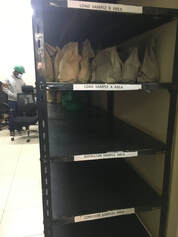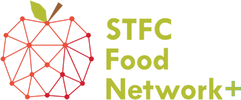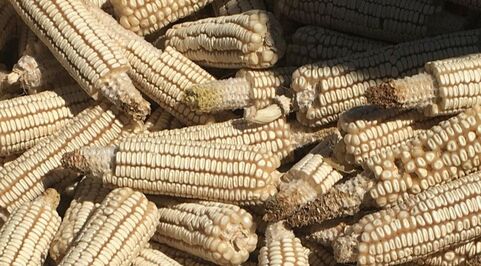|
A project supported by the SFN is bringing to light the problem of counterfeit seeds within African markets – and the best ways to tackle it Every time smallholder farmers sow their fields, they take a gamble that the seed in their hands will germinate well and lead to an abundant harvest. But in Sub-Saharan Africa, many of the seeds on the market are counterfeit or of poor-quality. A wide variety of reasons are behind this, including poor regulation by national governments, insufficient penalties, lack of quality controls within seed companies, and non-standardised labelling. With counterfeit and genuine seed typically being indistinguishable by sight alone, this makes it all too tempting for unscrupulous traders to boost their profits by mislabelling, adulterating or diluting seed. Ultimately, this has significant impacts for the deceived farmers, as Henry Hunga (University of Malawi) explains. “Counterfeit seed results in much poorer germination rates – sometimes as low as 0%, whereas the certification minimum standard is 95% for most crops. Consequently, farmers lose trust in formal seed supply systems, and are more reluctant to adopt seed for improved crop varieties.” This is a major contributing factor to the chronic problem of smallholder farmers achieving yields far below the potential harvest their land could generate. For instance, the average yield per hectare on smallholder farms is less than 1.5 tonnes for maize, 0.8 tonnes for legumes and 2.1 tonnes for rice against a potential of 8, 3, and 6.5 tonnes respectively. Clearly, tackling counterfeit seed could have a tremendous effect in bolstering food security in these regions. But with most evidence on the issue coming from farmer anecdotes, there is a lack of the hard data needed to give governments an incentive to act. In addition, poor understanding of how counterfeit seed enters the market has made it difficult to judge the points where interventions would be most effective. As part of a project supported by the SFN, Henry has started to address this. “Our objectives for the project were two-fold. First, to prove that there are indeed counterfeit seed on the market. And secondly, to map the seed supply chain and identify hotspots suitable for intervention” Henry says.  Laboratory at a seed company responsible for internal quality control - Credit: Henry Hunga Laboratory at a seed company responsible for internal quality control - Credit: Henry Hunga Capturing the scale of the problem: To understand how common counterfeit seed are, Henry and his colleagues used a mystery shopper approach to source 47 samples of maize seed from markets and trading centres across Malawi. The team then performed DNA sequencing to quantify the level of genetic variation both within the samples, and between the samples and reference seed from certified companies. This was followed by additional quality control tests, including for moisture content, germination and vigour.  Seed delivered to seed company from farm for processing (quality testing, sorting and packaging) - Credit: Henry Hunga Seed delivered to seed company from farm for processing (quality testing, sorting and packaging) - Credit: Henry Hunga "Rather shockingly, the results showed that only one sample from the market dealers matched the reference seed. None of the rest matched either the reference or similar varieties from different dealers” says Henry. “This clearly demonstrates that counterfeit maize seed is truly a serious problem within Malawi.” Having unequivocally confirmed counterfeit seed within the Malawi market, the next stage will be to quantify how widespread they are, including for other crops. “We also intend to establish a DNA reference library that can be accessed by stakeholders, which would significantly cut the time required for measuring genetic variation between samples” says Henry. Identifying strategic interventions: In parallel to the DNA sequencing work, the team also conducted a mapping exercise to identify which points along the seed supply chain are hotspots for counterfeiting activity, and should be targeted first. This involved visits to producers, multinational and national seed companies, markets and agrodealers in Lilongwe, Mchinji, Dowa, and Ntchisi districts in Malawi. “Our preliminary value chain mapping showed that most seed companies do not have internal quality control systems, and rely on public regulators who are often overwhelmed. Another major challenge came from dealers who fraudulently access company packaging materials, or produce counterfeit versions, then dilute or adulterate the actual seed” Henry says. But these could potentially be tackled by innovative, new technologies – such as Blockchain. A Blockchain [CW2] is essentially a digital ledger of transactions that is shared across all the computer nodes within the chain. Each new transaction is recorded on every participant’s ledger, making it very difficult to hack or change the data. “The distributed ledger system means data is not managed by individual stakeholders, making it tamperproof. This gives increased security, besides the ability to trace and share information across all stakeholders in real time” Henry says. Ultimately, Blockchain could enable batches of seed to be tracked right from production through to processing, markets and finally the farmers themselves. “Blockchain also has the advantage that it does not have to be regulated and maintained by governments. Preparing the private sector to be involved in the regulatory process is one of the best strategies for future interventions” Henry adds. But for Blockchain to be a success, it must be understood and accepted by the end-users themselves, so the project team also conducted stakeholder workshops with representatives from private seed companies. “The participants showed a strong interest in using Blockchain, and felt it was better than current traceability systems, such as verification codes, which are limited by the proprietary nature of data, and the fact they can be manipulated by individuals.” Henry now hopes to develop a proof-of-concept preliminary Blockchain platform for the Malawi seed supply chain. “Ultimately, we expect to link this Blockchain technology to DNA testing, so that seed companies and public regulators can verify that seed from producers is the true genetic material of the proclaimed seed variety” he says. If this goal comes to fruition, Henry’s work could help thousands of smallholder farmers achieve more consistent harvests. Yet the project has also helped him develop on a personal level, thanks to the support from the SFN: “Through the SFN, I have been able to work with a diverse team of experts, both locally and from the UK, and have also participated in several career development and networking activities. I am very glad to be part of the network, and hope to work with them further as we take this project forward.” Find out more: see our blog post on an SFN project using Blockchain and Internet of Things technologies to digitize Chinese food supply chains Henry would like to thank his UK-based co-investigators for their guidance and support during the project: Dr. Jens Jensen (STFC) Dr. Tom Kirkham (STFC) Dr. Jayne Crozier (CABI, UK) Dr. Sachin Kumar (University of Plymouth, UK) Dr. Manoj Dora (Brunel Business School, UK) Dr. Jan Mei Soon (University of Central Lancashire)
0 Comments
A project supported by the SFN is researching how to turn microalgae into a nutritious, useful and – above all – tasty food product  Could microalgae be a food for the future? - Credit: Yixing Sui Could microalgae be a food for the future? - Credit: Yixing Sui We are all too aware that our conventional agricultural systems are having devastating impacts on our planet. This has sparked a strong interest in more sustainable ‘alternative’ foods – from ‘lab-grown’ meat to insect-enriched flours – but these can only make a difference if consumers accept them. And for that to happen, novel foods need to be affordable, easy to cook with and, perhaps most importantly, appealing to our taste buds. Dr Yixing Sui (University of Greenwich) knows this only too well. “Even if you have a perfect food product that is both sustainable and healthy, you have to pay attention to the end-user because it will be of no good if the market doesn’t accept it.” The particular food he is trying to get on our plates is microalgae. This term includes both photosynthetic cyanobacteria and small, plant-like organisms on the single-celled scale. Individual microalgae can’t be seen without a microscope, but when they multiply in their thousands, they produce dense cultures of beautiful colours: green, orange, red or blue-green, depending on their pigments. As part of a long-term project supported by the SFN, Sui is researching how to turn this unappetising sludge into palatable food products. “We call it a novel food product, but microalgae has historically been eaten in Africa, Asia and South America” says Sui. The Aztecs, for instance, were recorded collecting mats of Spirulina species to make into dry cakes, called tecuitlatl. “Nevertheless, microalgae never became widespread across the modern world due to their having a very strong, fishy taste and smell, which most find off-putting.” With this in mind, why should we bother trying to eat it? First of all, microalgae have very strong nutritional credentials. “Microalgae species generally have high protein contents, with a profile that covers all the essential amino acids (for humans), comparable to soya, milk and eggs” says Sui, who for his PhD thesis researched how amino acid content in microalgae varies depending on their environment. “By changing the cultivation conditions, you can boost the level of a specific amino acid even further, without affecting the others.” Farming microalgae also has fewer environmental impacts than conventional protein production systems, since they are highly resource- and water-efficient, and can generate a harvest within weeks – significantly quicker than the annual cycles for most crops. There is also the advantage that microalgae can be farmed anywhere, as Sui explains: “All you need is sunlight, a warm temperature and an open pond or photobioreactor. This opens up the possibility of growing microalgae using land that is currently unproductive, such as deserts.” But for microalgae’s benefits to be realised, we need to first overcome the taste barrier. To address this, Sui and his colleagues are researching how flavour compounds vary across different species, and whether these can be manipulated to make them taste better. As part of a SFN Scoping Project, he joined forces with Dr Geraint Morgan (The Open University), who has a track record in applying highly-advanced analytical techniques to new sectors, including the food industry. The team initially focused on identifying glutamate and aspartate, two compounds that give the umami taste - the savouriness we associate with foods such as cooked meats, tomatoes, mushrooms, cheese and broths. Rather than choosing a microalgae species from the Spirulina and Chlorella genera (conventionally used for human consumption), they selected Dunaliella salina, a species that is already widely farmed to produce β-carotene. Nevertheless, D. salina is also protein-rich, with an amino acid profile that matches human requirements. “Our first objective was to establish if microalgae do contain umami compounds at all” says Sui. “The second was to understand how these are balanced with compounds for other flavours, including bitterness and earthiness, to see if the overall profile could be tweaked to resemble something more like mushroom-meat.” The project uses gas chromatography, a technique for separating and identifying different compounds. “The samples are heated and vaporised in the gas chromatography instrument, and the gaseous compounds travel through a matrix material” says Geraint. “The distance that the compounds travel through the matrix before being adsorbed to it depends on their chemical structure – we call this the retention time.” The compounds can then be identified by comparing the retention times with those in reference libraries. In previous SFN Scoping Projects, Geraint has demonstrated how gas chromatography techniques can be applied to the food sector, including in ‘sniffing out’ rotten avocados from unblemished ones, and predicting the shelf life of bagged salads. Whilst the results confirmed the protein potential of D. salina, the team only detected low levels of glutamate and aspartate. But unexpectedly, through follow-up work supported by ValgOrize (a European project funded by the Interreg 2 Seas programme) they found that D. salina is unusual in having an overall sweet and floral flavour, rather than a fishy one. “We checked the results by sending samples to be tested by panels of trained human tasters at the Flanders Research Institute for Agriculture, Fisheries and Food . These found that this microalgae has a very different taste profile compared with Spirulina and Chlorella” says Sui. The challenge now is to identify these compounds, and then work out how both production and cooking processes can be optimised to enhance these as much as possible. “Since the biochemical composition of microalgae is so dependent on the environmental conditions, developing this analytical capacity further will be crucial to finding out the best cultivation techniques” says Sui. Consequently, he is keen to continue working with the SFN and has been awarded a proof-of-concept grant from the Network. This will involve experimenting with D. salina as a food ingredient, and tracking the changes in nutritional and taste profiles before and after cooking in order to identify the most suitable food products to use it in. “There are a wide range of potential uses, including noodles, cupcakes and even as an egg replacement in vegan versions of products such as mayonnaise and pastry. But this will depend on other properties besides taste, including structure and texture” says Sui. It may be a while yet before many microalgae-enhanced foods appear on our supermarket shelves, but in the meantime Sui has already started experimenting, using commercial D. salina powder sourced from Australia. “I used the powder to make cookies, and whilst they were a bit green they definitely didn’t have a fishy smell!” Find out more: Read our blog post on a SFN-supported start-up bringing another novel aquatic protein source to market: Lemna, a water plant that looks unremarkable, but could be a highly sustainable food for the future. |
AuthorJune 2024 - Archives
June 2024
Categories |
- Home
- Webinars and Events
- About the SFN+
- News
- Blog
- Expert Working Groups
- Funding
-
Publications
- Bioeconomy positioning paper
- SFN+ 5th Annual Conference
- OMM Policy Report
- ‘Multi-Stakeholder International One Day Workshop on Organic Agri-Food Value Chains for Net Zero’ Report
- SFN 2050 UK Net Zero Food report
- Sustainable Cold Food Chain Booklet
- Food Sensing Technologies for Safe and Nutritious Food
- Sustainable urban and vertical farming
- Projects
- Join/Contact Us



 RSS Feed
RSS Feed


